Tibesti-Jebel Uweinat Montane Xeric Woodlands
The ecoregion’s land area is provided in units of 1,000 hectares. The conservation target is the Global Safety Net (GSN1) area for the given ecoregion. The protection level indicates the percentage of the GSN goal that is currently protected on a scale of 0-10. N/A means data is not available at this time.
Bioregion: Southern Sahara Deserts & Mountain Woodlands (PA25)
Realm: Southern Eurasia
Ecoregion Size (1000 ha):
8,242
Ecoregion ID:
844
Conservation Target:
70%
Protection Level:
0
States: Chad, Libya, Sudan, Egypt
The Tibesti-Jebel Uweinat Montane Xeric Woodlands contain the highest mountain of the Sahara, Emi Koussi at 3,415 m. Both Tibesti and Jebel Uweinat have beautiful rock art, recording the animal and human life of the area, carved in caves and on outcrops over 7,000 years ago. A refuge for relict Mediterranean flora, with cooler temperatures and higher rainfall compared to the surrounding desert, the ecoregion provides a haven for aoudad, Dorcas gazelle, jackals, foxes, rock hyrax, Egyptian vultures, sand grouse, and greater hoopoe-larks. The permanent rockpools of Tibesti support eight endemic relict fish species.
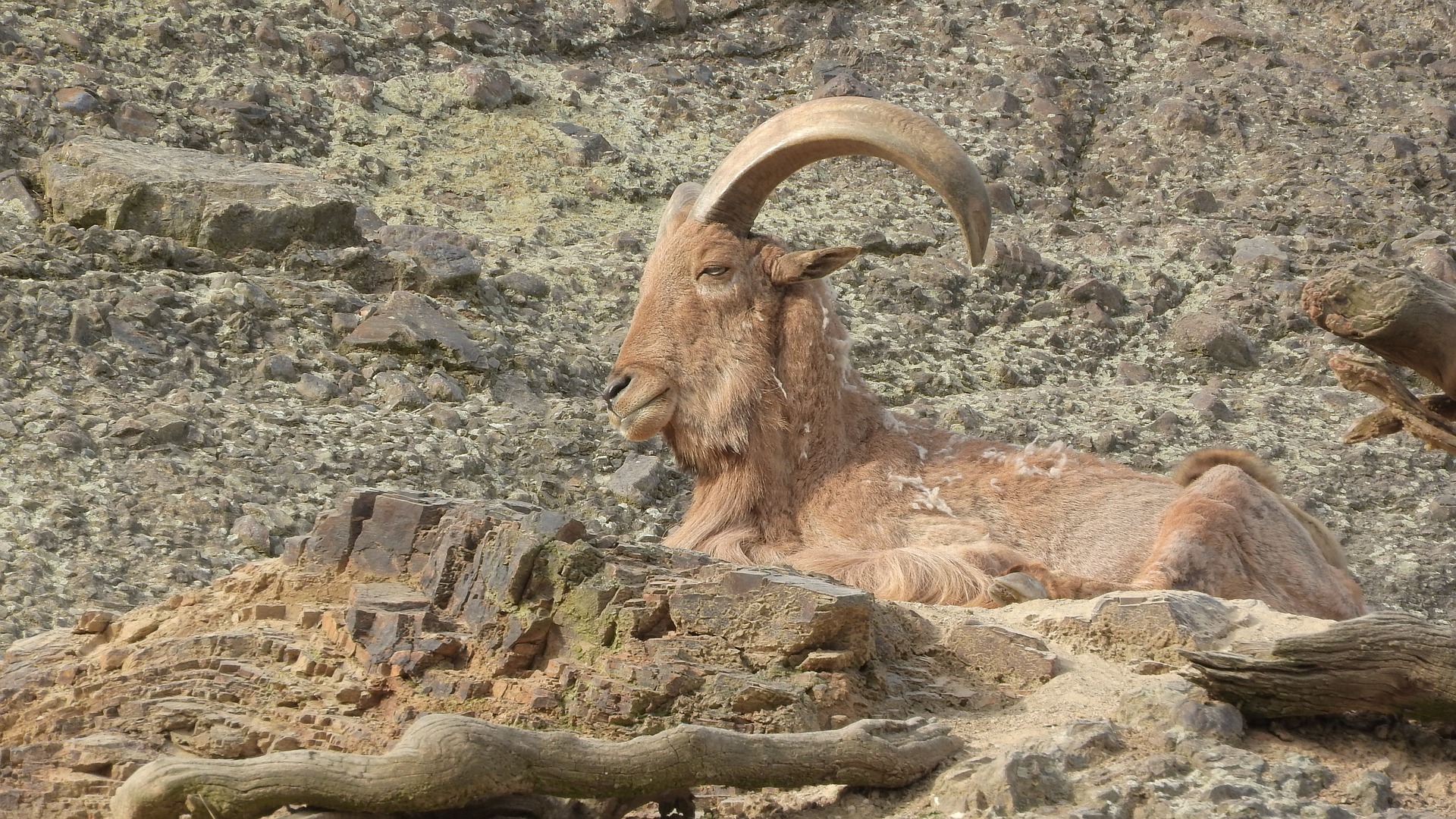
The flagship species of the Tibesti-Jebel Uweinat Montane Xeric Woodlands ecoregion is the aoudad. Image credit: Maky Orel, Creative Commons
This ecoregion encompasses two mountainous areas rising from the central Sahara Desert: Tibesti in northern Chad and Libya and the smaller Jebel Uweinat region, located on the intersection of the Libya, Egypt, and Sudan borders. Both are basalt outcrops, the result of volcanic activities still evident in Tibesti with its seven inactive volcanoes and numerous fumaroles, mud-pools, and hot springs. The highest peaks in Jebel Uweinat are just under 2,000 m tall; in Tibesti elevations reach 3,415 m. Lowland average temperatures are 12–30°C, at higher altitudes this falls to 9–20°C and winter temperatures can reach zero. Annual rainfall in the surrounding desert is around 100 mm. In the mountains this is slightly higher and more regular but still less than 600 mm per year.
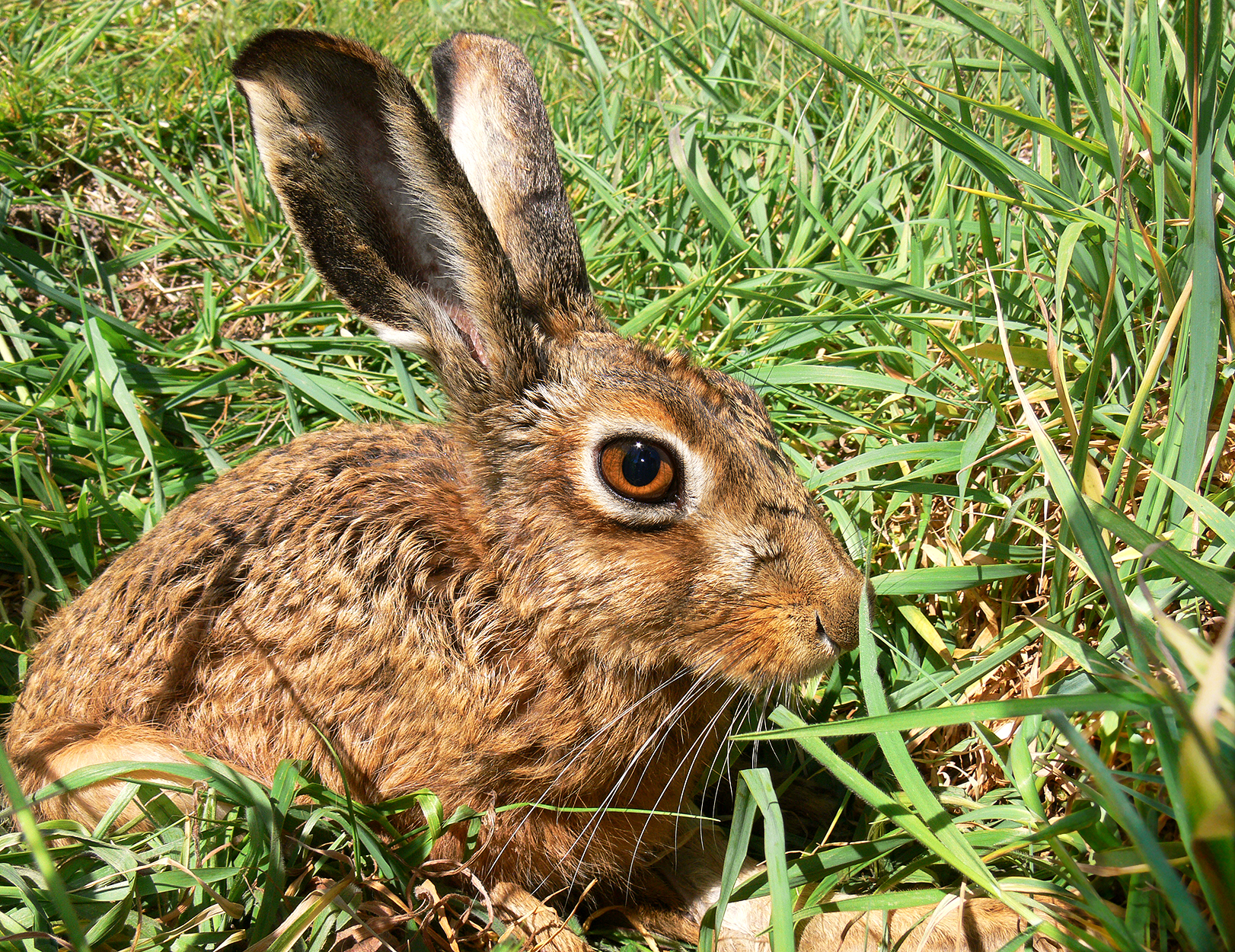
Cape hare. Image credit: Creative Commons
Tibesti has permanent pools (gueltas) found among ravines, and seasonal watercourses (wadis), which flow following rain. The mountains are an important refuge for relict Mediterranean flora such as the endemic Nivelle myrtle. Doum palm, toothbrush tree, apple-ring acacia, Tamarix articulata, and Acacia nilotica adstringens grow along wadis, while gueltas also support date palms. Nivelle myrtle, wonderboom tree, and highly poisonous oleander are found on the mountain slopes. Jebel Uweinat has sparse amounts of Salvia and Lavandula on peaks and umbrella thorn acacia, Fagonia indica, and kapok at lower altitudes.
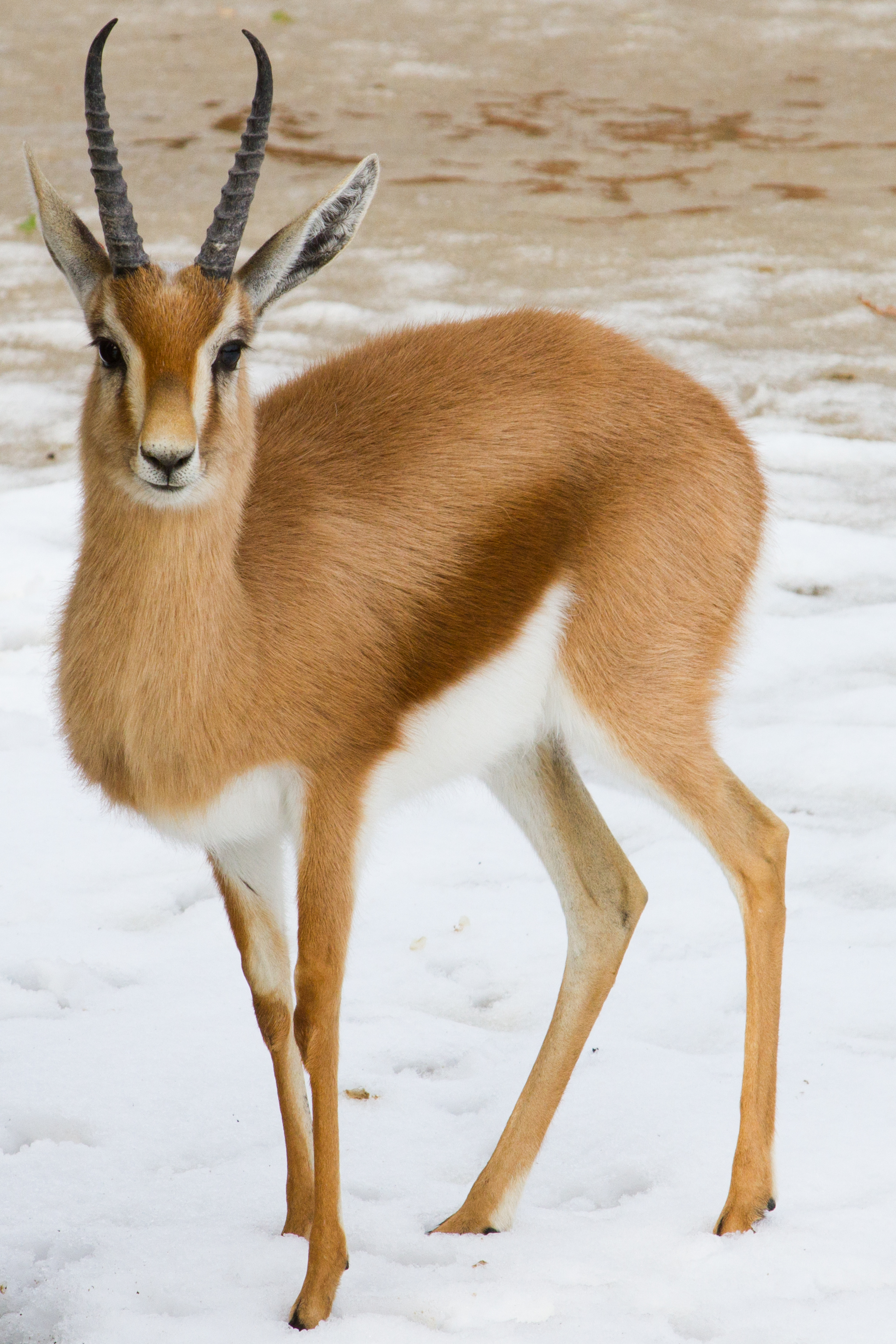
Dorcas gazelle. Image credit: Creative Commons
Vulnerable populations of aoudad, Dorcas gazelle, and striped hyena are supported by the ecoregion, as are many smaller mammals such as golden jackal, Rüppell’s fox, fennec fox, Cairo spiny mouse, North African gerbil, and rock hyrax. There is possibly a population of endangered endemic slender-horned gazelle. Birds adapted to the arid conditions find refuge, including endangered Egyptian vultures, crowned and Lichtenstein’s sand grouses, Egyptian nightjar, fulvous babbler, desert sparrow, bar-tailed lark, greater hoopoe-lark, pale crag martin, white-crowned wheatear, and blackstart. The presence of permanent water means Tibesti supports eight endemic relict fish species of Central Sahara.
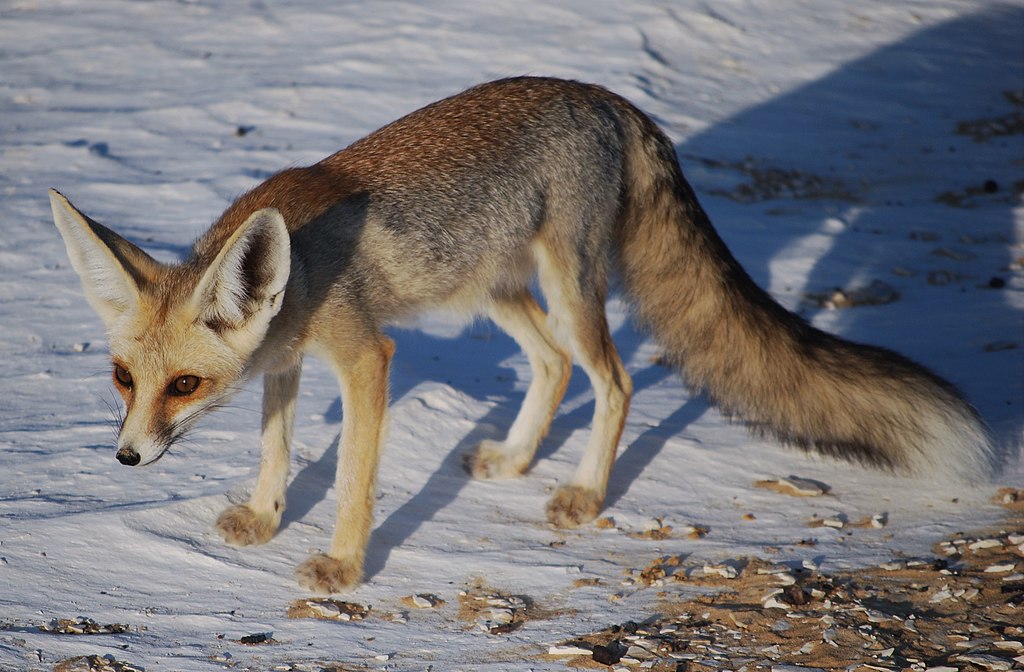
Rüppell's fox. Image credit: Helmut Boehm, Creative Commons
Although the human population is very low in this region, there has been ongoing conflict for decades. Since 2012 the area in the vicinity of Tibesti has experienced a gold boom and there has been violence between the local Teda pastoralist population, miners, and government forces. A number of species previously reported are now believed to be absent, including addax, dama gazelle, cheetah, and ostrich. The biodiversity and species richness of the region, particularly in the Tibesti mountains, are currently not well documented. Only a small area of the ecoregion at Jebel Uweinat is part of a protected area: the southwestern tip of El-Gelf El-Keber National Park in Egypt.

Cheetah. Image credit: Lukas Kaffer, Creative Commons
The ecoregion is vulnerable to multiple sources of conflict within Chad, Libya, and Sudan and is the subject of armed conflict, landmine placement, attacks, and kidnappings. Conservation work is therefore logistically difficult and dangerous, despite recommendations to form a new protected area formed in Tibesti. Bushmeat hunting threatens the remaining antelope populations. Recently, specialist tourism operators have been taking 4x4 vehicle groups into Tibesti to tour the craters and rock art.
The priority conservation actions for the next decade will be to: 1) create a protected area within Tibesti, involving Teda nomadic pastoralists in the planning process; 2) manage the impact of hunting and off-road 4x4 vehicle tourism; and 3) expand protection of the Jebel Uweinat across the Libyan and Sudanese borders.
Citations
- Burgess, N., Hales, J.A., Underwood, E., Dinerstein, E., Olson, D., Itoua, I., Schipper, J., Ricketts, T. and Newman, K. 2004. Terrestrial Ecoregions of Africa and Madagascar: A Conservation Assessment. Washington DC: Island Press.
- Brito, J.C., Godinho, R., Martínez-Freiría, F. et al. 2014. Unravelling biodiversity, evolution and threats to conservation in the Sahara-Sahel. Biological Reviews. 89, 215–231.
- Fishpool, L. D. C. and Evans, M. I. eds. 2001. Important Bird Areas in Africa and Associated Islands: Priority Sites for Conservation. Cambridge, Pisces Publications; Cambridge, Birdlife International.
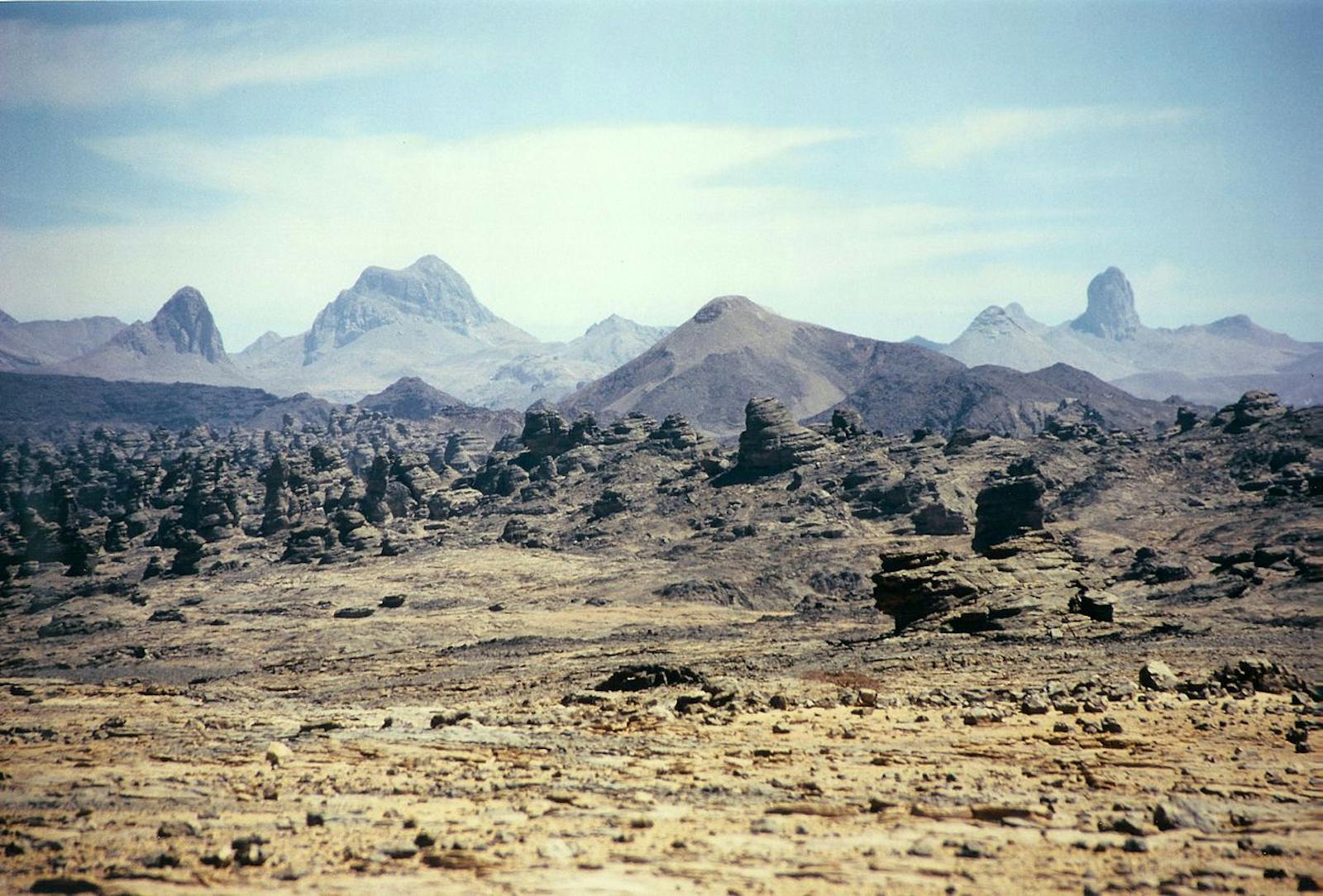
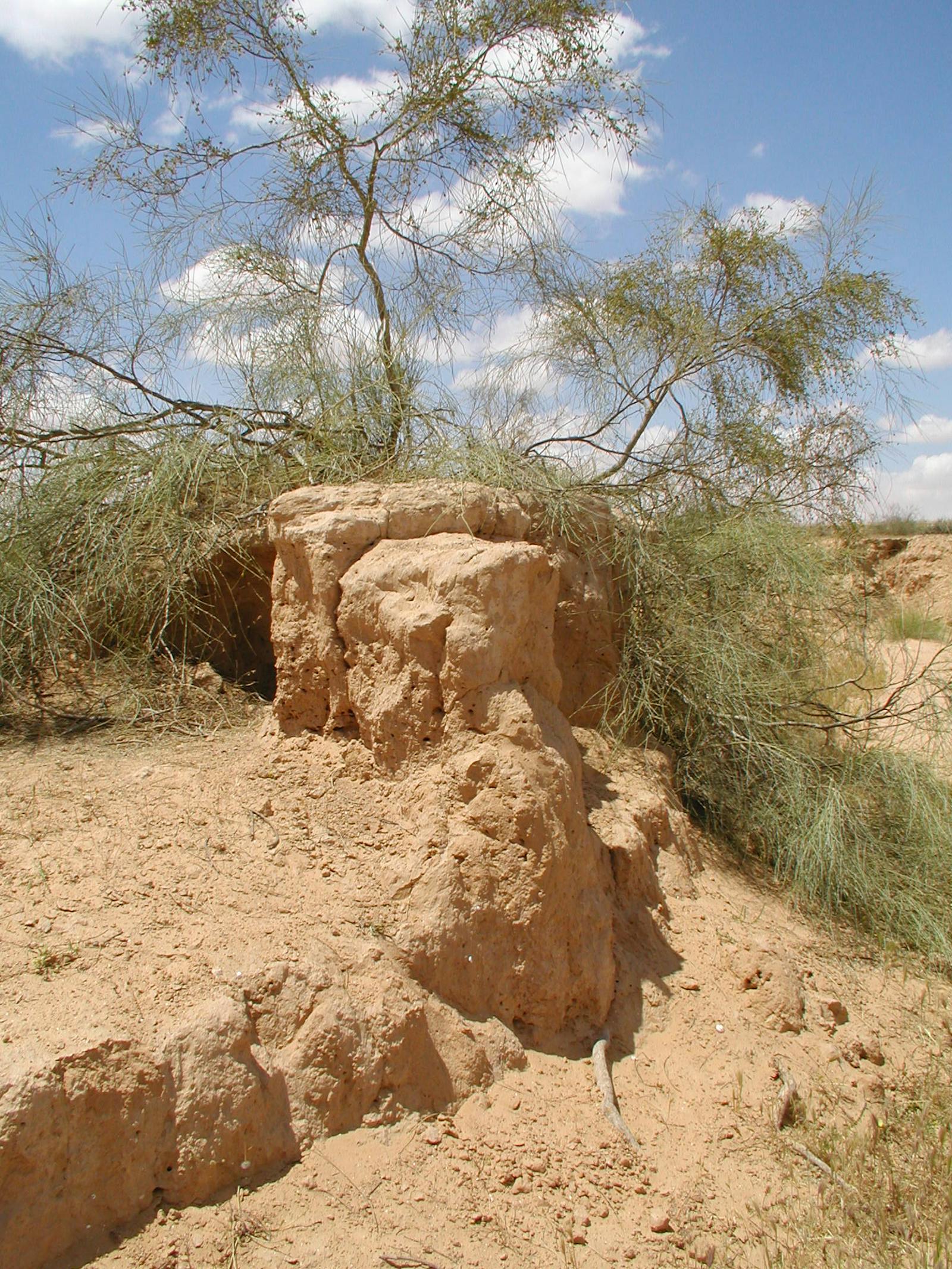
.png?auto=compress%2Cformat&w=300)

